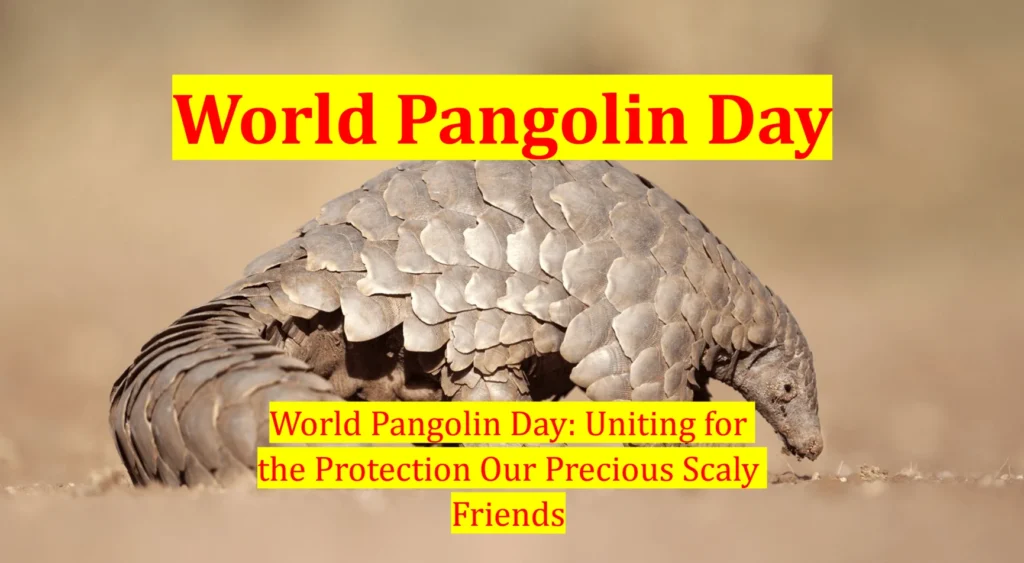
Introduction
Pangolins, often referred to as “scaly anteaters,” are unique creatures that belong to the family Manidae. These fascinating mammals are primarily found in Africa and Asia, with four species residing in Africa and four in Asia. Despite their distinctive appearance and interesting habits, they face a grave threat due to illegal poaching and trafficking for their scales, which are falsely believed to have medicinal properties in traditional Asian medicine.
Overview of Pangolins
They are known for their unique appearance and behavior. These solitary nocturnal creatures have scales covering their bodies, acting as a natural defense mechanism against predators. They primarily feed on ants and termites, using their long tongues to capture their prey. They are excellent climbers and swimmers, adapting to various environments across their range.
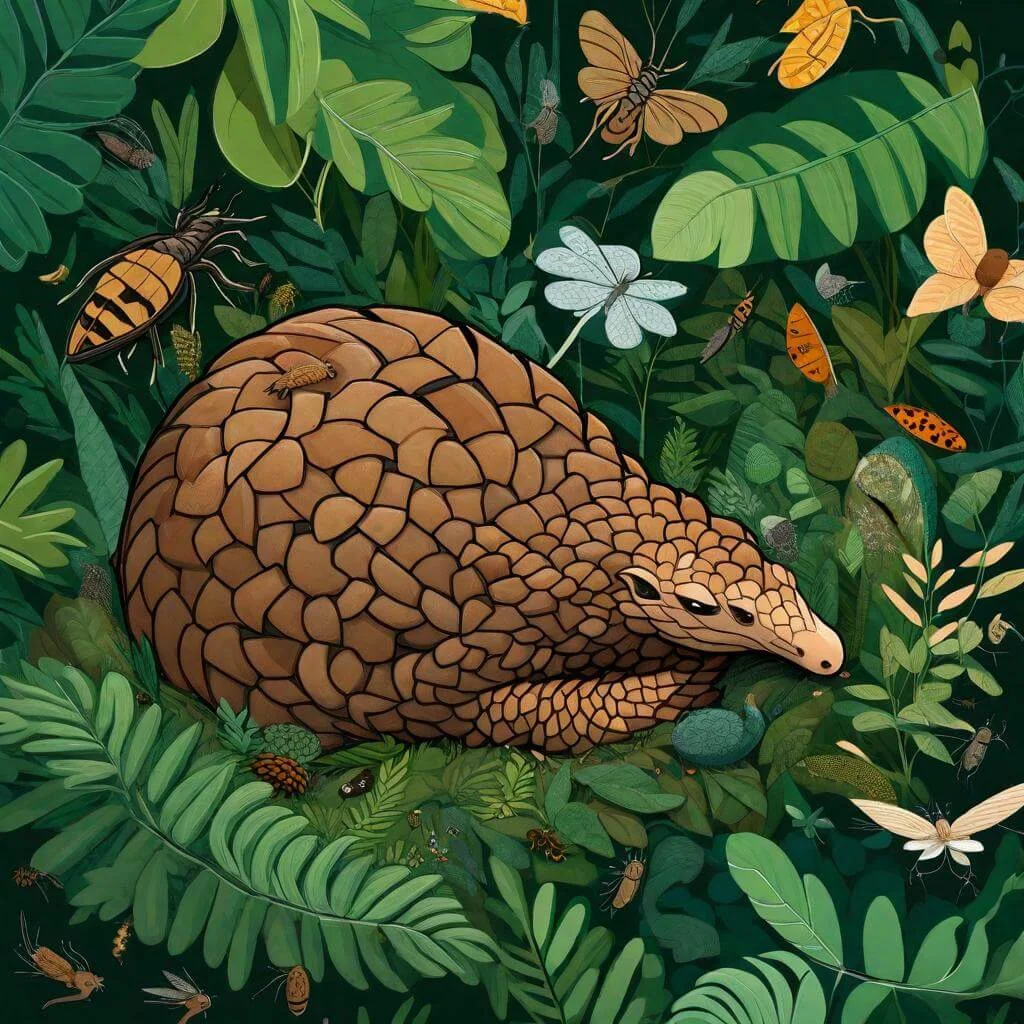
Physical Characteristics of Pangolins
They are fascinating creatures with several unique physical characteristics that set them apart in the animal kingdom. Here are some notable features:
- Scales
- One of the most distinctive features of these creature is their overlapping scales, which cover almost the entire body.
- These scales are made of keratin, the same material found in human fingernails and hair, and serve as a protective armor against predators.
- The scales are hard and sharp, acting as a formidable defense mechanism. When threatened, they curl into a tight ball, protecting their softer underbelly with their tough scales.
- Long, Sticky Tongue
- They have remarkably long tongues, often longer than their entire body length.
- These tongues are attached near the pelvis and can extend up to 16 inches (40 centimeters) in some species.
- The tongue is covered in sticky saliva, which helps them capture and consume their favorite prey: ants and termites.
- Adapted Limbs
- They have powerful claws on their forelimbs, which they use for digging into termite mounds and ant nests.
- Their hind limbs are sturdy and well-developed, enabling them to climb trees and walk on the ground with ease.
- Prehensile Tail
- They possess a prehensile tail, which means they can use it to grasp objects like tree branches.
- While on the ground, they often hold their tails off the ground, using them for balance and support.
- Scent Glands
- They have scent glands near the base of their tails, which they use for marking territory and communicating with other pangolins.
- These glands secrete a pungent odor, which serves as a warning to potential predators or as an attractant during mating season.
- Size and Weight
- They vary in size depending on the species, ranging from about 30 centimeters (12 inches) to 100 centimeters (39 inches) in length.
- They can weigh anywhere from 1 kilogram (2.2 pounds) to 33 kilograms (73 pounds), again depending on the species.
These physical adaptations make them well-suited to their unique ecological niche as specialized insectivores. However, these features also make them vulnerable to human activities such as habitat destruction and illegal hunting for their scales and meat, leading to significant population declines across all their species.
Global Conservation Status of Pangolins
The status of pangolins, both in terms of conservation and legal protection, is of paramount importance given the significant threats they face worldwide. Here’s an overview of the status of pangolins as per the International Union for Conservation of Nature (IUCN), CITES (Convention on International Trade in Endangered Species of Wild Fauna and Flora), and the Indian Forest Act:
IUCN Red List Status
- All eight species of pangolins are classified as threatened or endangered on the IUCN Red List of Threatened Species.
- The classifications range from vulnerable to critically endangered, reflecting the severe population declines and threats faced by these species.
CITES Listing
- The Convention on International Trade in Endangered Species of Wild Fauna and Flora (CITES) has placed them in Appendix I.
- Appendix I includes species threatened with extinction, and trade in specimens of these species is permitted only in exceptional circumstances.
- They and their derivatives are subject to strict regulation under CITES, with international commercial trade banned to protect them from exploitation.
Indian Forest Act
- In India, they have received protection under the Wildlife (Protection) Act of 1972.
- They are listed in Schedule I of the Wildlife (Protection) Act, which provides them with the highest level of legal protection.
- Schedule I species are afforded stringent protection against hunting, trade, and other forms of exploitation. Offenses related to Schedule I species carry severe penalties, including fines and imprisonment.
The legal framework provided by the Wildlife (Protection) Act and CITES, along with the conservation efforts of governmental agencies, non-governmental organizations, and local communities, are critical for the conservation of pangolins in India and globally.
Conservation initiatives for them include habitat protection, law enforcement against poaching and illegal trade, community engagement, research and monitoring, and awareness campaigns to reduce demand for pangolin products.
Despite these efforts, they continue to face significant threats, including habitat loss, poaching for their scales and meat, and trafficking for illegal trade. Addressing these threats requires coordinated action at local, national, and international levels, along with sustained commitment to their conservation and the enforcement of existing legal protections.
Threats Faced by Pangolins and Conservation Efforts
Threats to Pangolins
They are often referred to as the world’s most trafficked mammal, face a myriad of threats that endanger their very existence. Understanding these threats is crucial in efforts to protect these gentle creatures.
Illegal Wildlife Trade
The illegal wildlife trade poses a significant threat to them, driven by the high demand for their scales and meat in Asian markets. Their scales are falsely believed to have medicinal properties, leading to their use in traditional Chinese medicine. In addition, their meat is considered a delicacy in certain regions, further fueling the demand.
Habitat Loss
Habitat loss, primarily due to deforestation and land conversion for agricultural purposes, has severely impacted their populations. As their natural habitats continue to shrink, they are forced to venture into new territories, increasing their vulnerability to predators and human threats.
Traditional Medicine and Superstitions
Deep-rooted cultural beliefs and superstitions surrounding them drive their exploitation for traditional medicine and ritual practices. Despite lacking scientific evidence, the demand for pangolin products persists, perpetuating the cycle of harm inflicted upon these defenseless creatures.
Conservation Efforts for Pangolins
In response to the declining pangolin populations, various conservation efforts have been initiated worldwide to protect these unique mammals.
International Laws and Regulations
International agreements such as the Convention on International Trade in Endangered Species of Wild Fauna and Flora (CITES) play a crucial role in regulating the trade of pangolins and their derivatives. These legal frameworks aim to curb illegal trafficking and protect them from further exploitation.
Anti-Poaching Measures
Anti-poaching initiatives focus on reducing the hunting and killing of these innocent creatures for commercial gain. By increasing surveillance, implementing stricter penalties for poachers, and raising awareness about the illegality of their trade, these measures aim to deter illegal activities and safeguard their populations.
Rehabilitation and Release Programs
Rehabilitation centers and release programs offer injured or confiscated pangolins a chance to recover and return to their natural habitats. These initiatives provide essential care, veterinary treatment, and support for pangolins in need, with the ultimate goal of reintroducing them into the wild to ensure their survival.
By uniting efforts to combat illegal wildlife trade, address habitat loss, challenge traditional beliefs, and implement conservation strategies, we can secure a brighter future for pangolins and work towards a world where these precious scaly friends thrive. Let us stand together on World Pangolin Day and beyond in support of these remarkable creatures.
Types of Pangolins and their Importance to Ecosystem
Types of Pangolins
Black-bellied Pangolin (Phataginus tetradactyla)
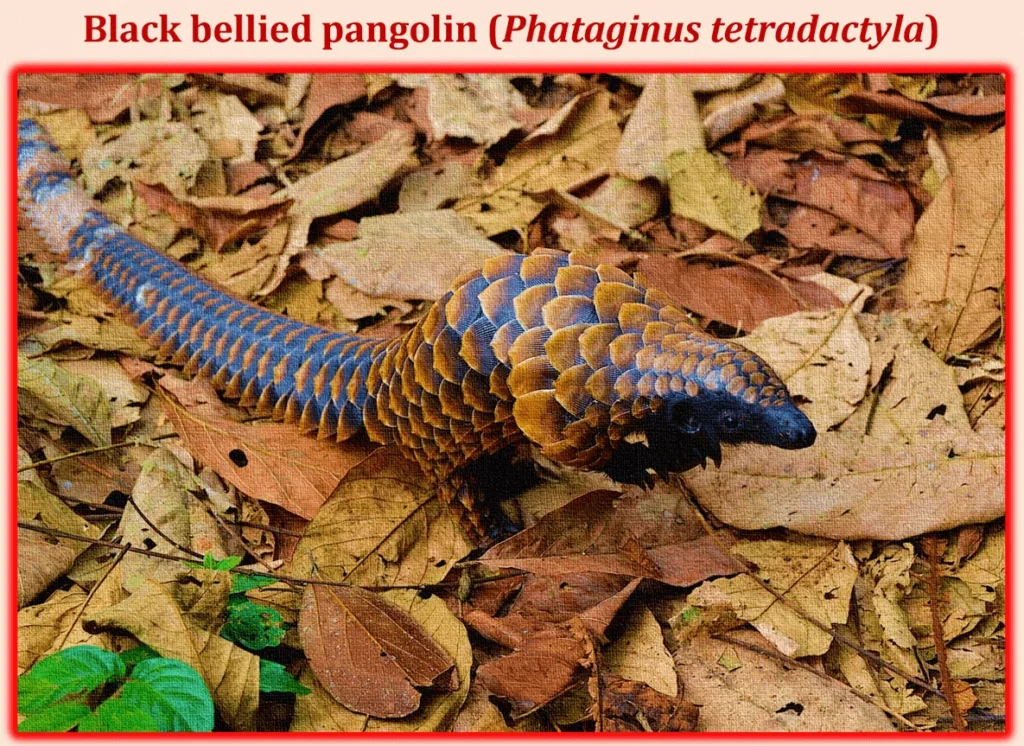
- Vulnerable
- Also known as the African tree pangolin, the black-bellied pangolin is found in various forested regions across Central and West Africa.
- It has dark brown to black scales on its dorsal side and a distinctive white or cream-colored belly.
- The majority of the black-bellied pangolin’s life is spent in trees, where it forages for termites and ants.
White-bellied Pangolin (Phataginus tricuspis)
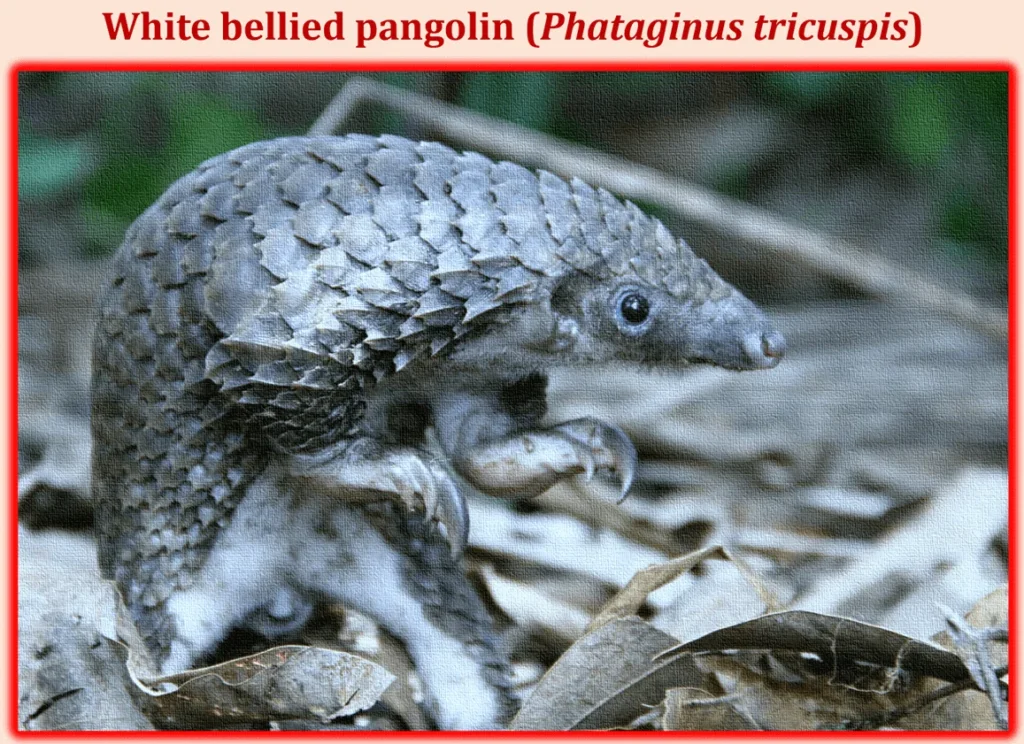
- Endangered
- The white-bellied pangolin inhabits forests and savannas in West and Central Africa.
- It has overlapping, sharp-edged scales covering its body, which are pale to yellowish-brown in color.
- The white-bellied pangolin is predominantly nocturnal and primarily terrestrial, although it can also climb trees.
Giant Pangolin (Smutsia gigantea)
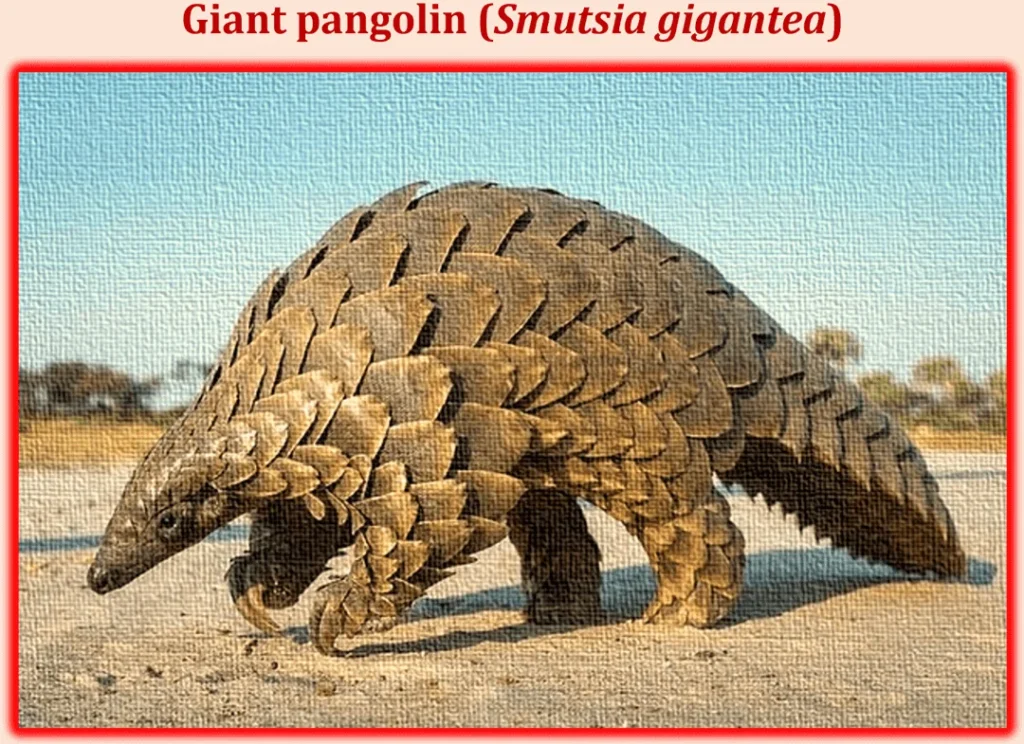
- Endangered
- As the largest pangolin species, the giant ground pangolin is found in a range of habitats across Central and Southern Africa, including savannas, woodlands, and grasslands.
- It has large, heavily keratinized scales and powerful claws, adapted for digging into ant and termite mounds.
- They are primarily nocturnal and solitary, spending much of its time foraging for insects on the ground.
Temminck’s Ground Pangolin (Smutsia temminckii)
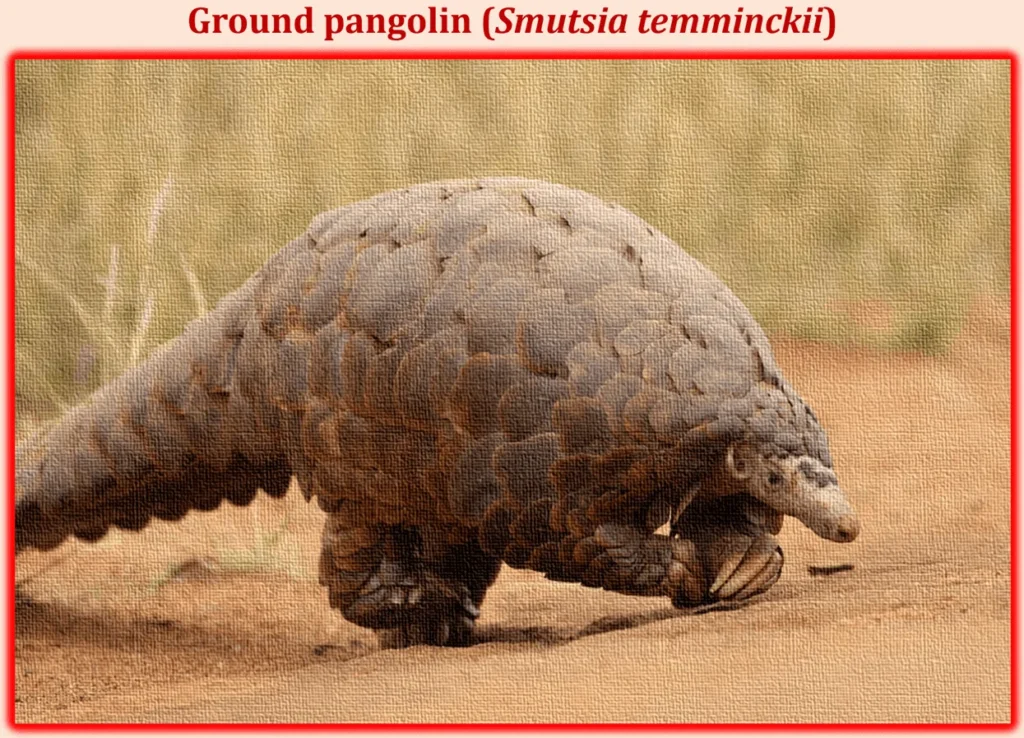
- Vulnerable
- Found in Southern and Eastern Africa, including countries like South Africa, Namibia, and Zimbabwe, they prefer dry savannas and grasslands.
- It has smaller scales compared to the giant ground pangolin and distinctive bands of dark and light scales across its body.
- Like other ground pangolins, they are nocturnal and feeds primarily on ants and termites.
Indian Pangolin (Manis crassicaudata)
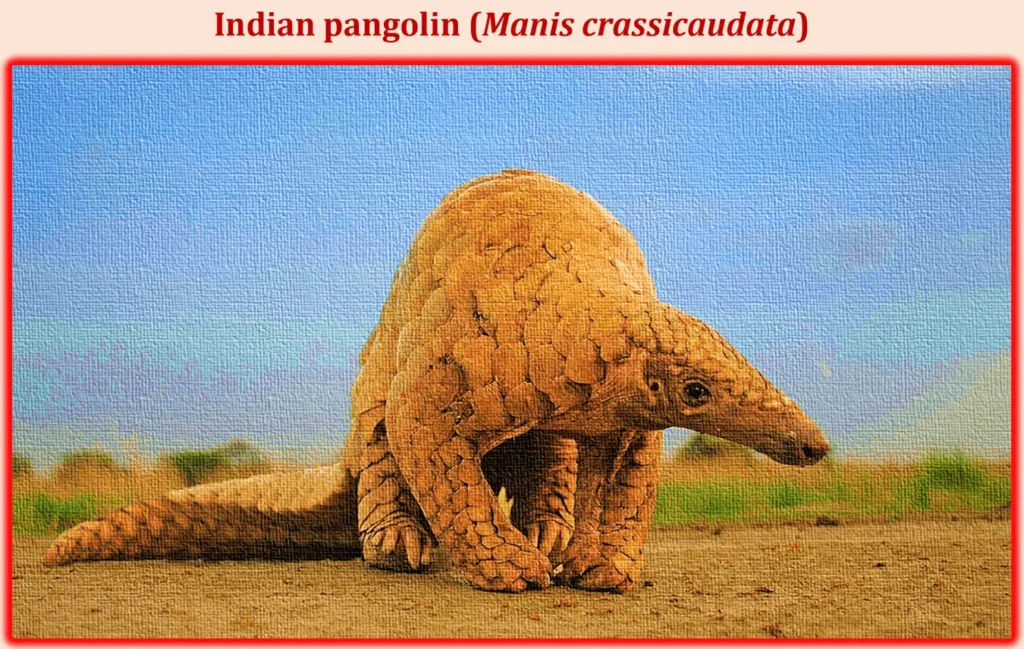
- Endangered
- The Indian pangolin is found across the Indian subcontinent, including India, Nepal, Sri Lanka, Bangladesh, and parts of Pakistan.
- It has large, overlapping scales that are pale to dark brown in color and a long, tapered tail.
- They are mainly nocturnal and terrestrial, inhabiting a variety of habitats, from forests to grasslands.
Philippine Pangolin (Manis culionensis)
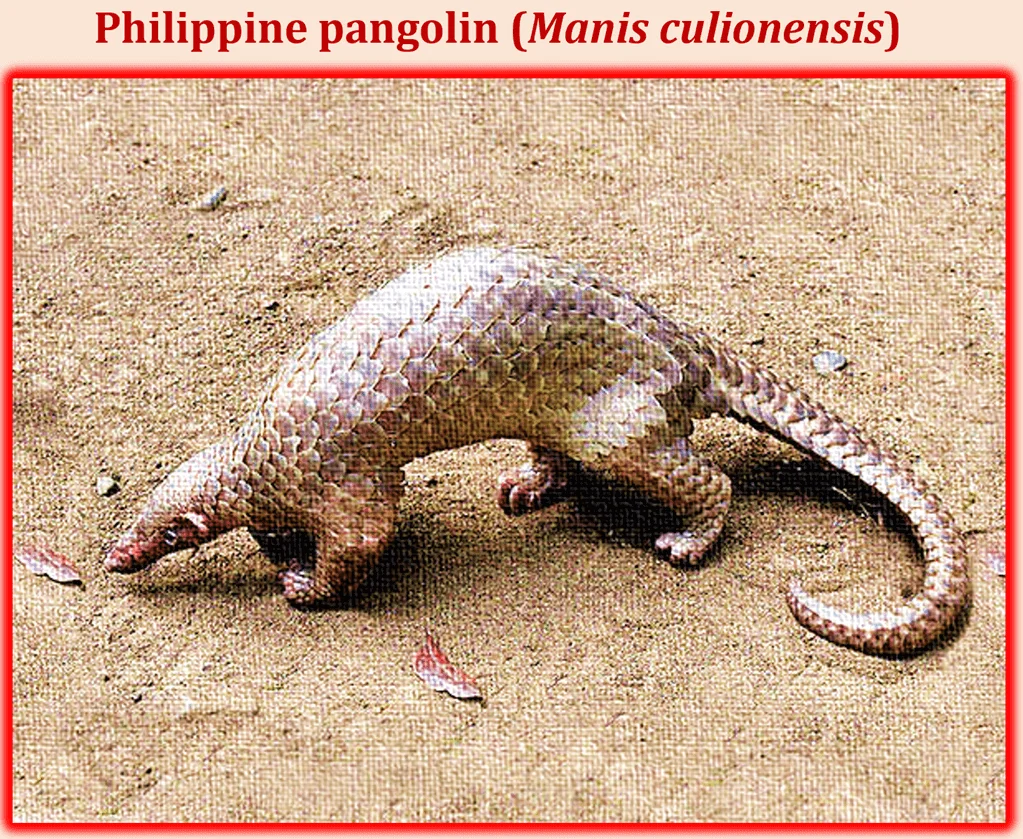
- Critically Endangered
- Endemic to the Philippines, the Philippine pangolin is found on several islands in the archipelago.
- It has smaller scales compared to other pangolin species and a distinctive coloration with light and dark patches.
- They are primarily nocturnal and arboreal, often found in forested areas.
Sunda Pangolin (Manis javanica)
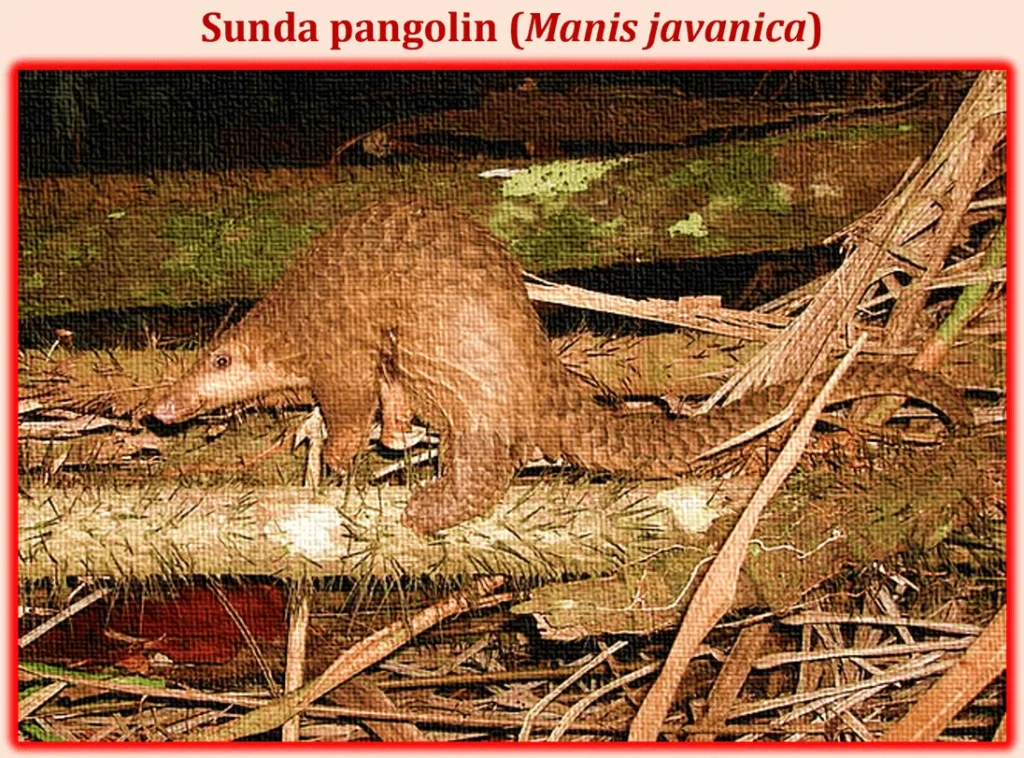
- Critically Endangered
- The Sunda pangolin is native to Southeast Asia, including Indonesia, Malaysia, Thailand, and Vietnam.
- It has overlapping, sharp-edged scales that are yellowish-brown to dark brown in color.
- They are also primarily nocturnal and terrestrial, inhabiting various forested habitats.
Chinese Pangolin (Manis pentadactyla)
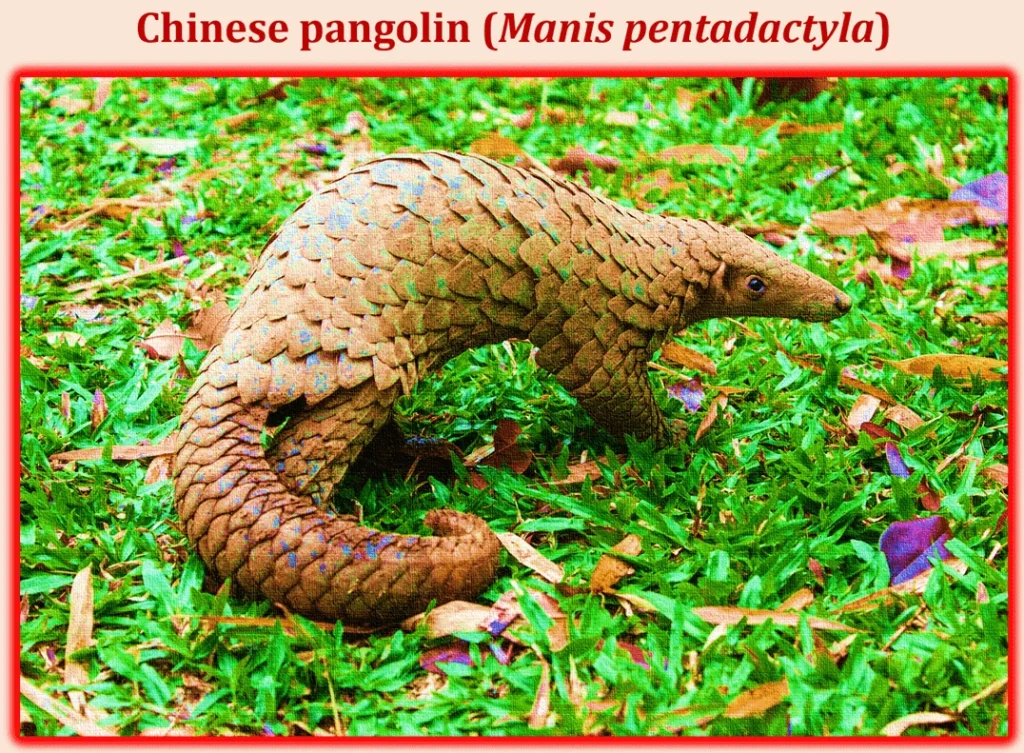
- Critically Endangered
- Found in various parts of China and neighboring countries, the Chinese pangolin inhabits forests, grasslands, and agricultural areas.
- It has small, smooth scales and a relatively long tail compared to other species.
- They are also nocturnal and terrestrial, feeding on ants and termites.
These eight species of pangolins face significant threats from habitat loss, poaching, and illegal trade, highlighting the urgent need for conservation efforts to protect these unique and ecologically important mammals.
Importance of Pangolins in Ecosystems
They play a crucial role in maintaining ecosystem health and functioning, primarily through their feeding behavior and habitat preferences. Here are some key aspects highlighting the importance of these creatures to ecosystems:
Natural Pest Control
- They are specialized insectivores, primarily feeding on ants and termites. As such, they help regulate insect populations, including pest species that can damage crops and other vegetation.
- By controlling insect populations, they indirectly contribute to maintaining the balance of ecosystems and reducing the impact of pests on agricultural productivity.
Soil Aeration and Nutrient Cycling
- They dig into the soil and leaf litter in search of their insect prey. This digging behavior helps aerate the soil, promoting nutrient cycling and microbial activity.
- Their foraging activities contribute to the decomposition of organic matter, facilitating nutrient release and enhancing soil fertility.
Seed Dispersal
- They may inadvertently aid in seed dispersal as they move through their habitats. Seeds from the fruits and plants they consume can be deposited in different locations through their feces, potentially contributing to the regeneration and diversity of plant communities.
- This dispersal of seeds helps maintain the structure and composition of plant populations, supporting the overall health and resilience of ecosystems.
Indicator Species
- They serve as indicator species for the health of their habitats. Their presence or absence can reflect changes in ecosystem conditions, such as habitat degradation, loss of prey species, or environmental pollution.
- Monitoring their populations can provide valuable insights into broader ecological trends and help guide conservation efforts for other species sharing their habitats.
Cultural and Ecotourism Value
- They hold cultural significance in many societies, often featuring in folklore, traditional medicine, and spiritual beliefs.
- Their unique appearance and elusive nature also make them a focal point for ecotourism, providing economic benefits to local communities and supporting conservation initiatives.
Despite their ecological importance, they face numerous threats, including habitat loss, poaching, and illegal trade. Protecting them and their habitats is not only essential for their survival but also for maintaining the balance and resilience of ecosystems they inhabit. Conservation efforts aimed at safeguarding them contribute to broader biodiversity conservation goals and promote sustainable ecosystem management practices.

How You Can Help Pangolins?
They face numerous threats, including habitat loss, poaching, and illegal trade. Here are three practical ways you can contribute to their conservation efforts.
- Support Conservation Organizations: Donate to reputable conservation organizations that work to protect them and their habitats. Your contribution can fund research, rescue operations, and educational initiatives aimed at raising awareness about the plight of pangolins.
- Raise Awareness in Your Community: Spread the word about the importance of pangolins and the threats they face. Organize educational events, share information on social media, or engage in discussions with friends and family to raise awareness about the conservation needs of these unique creatures.
- Responsible Tourism Practices: If you have the opportunity to visit areas where they are found, practice responsible tourism. Avoid supporting activities that exploit or harm them, such as purchasing their products or participating in wildlife interactions that may jeopardize their well-being.
“The future of pangolins depends on our collective efforts to protect and preserve these incredible animals. Together, we can make a difference and ensure that pangolins continue to thrive in the wild.”
By understanding the importance of these creatures in ecosystems, supporting conservation initiatives, and promoting responsible behavior, we can unite to safeguard the future of our precious scaly friends on World Pangolin Day and beyond.
Conclusion & FAQs
On World Pangolin Day, let us unite in our efforts to protect these unique creatures from extinction. By dispelling myths, raising awareness, and taking action, we can make a difference in the conservation of pangolins worldwide. Together, we can ensure a brighter future for our precious scaly friends.
Frequently asked questions (FAQs)
Why are pangolins considered the most trafficked mammal in the world?
Pangolins are highly sought after for their scales, which are believed to have medicinal properties in some traditional Asian medicine practices. Additionally, their meat is considered a delicacy in certain cultures. As a result, they face intense poaching and trafficking threats, making them the most trafficked mammal in the world.
What are some common misconceptions about pangolins?
One common misconception about them is that their scales are made of keratin, similar to fingernails, which can be easily replaced if harvested. However, their scales are actually made of keratin-rich hair, making them essential to the animal’s survival. Another misconception is that they are aggressive animals, when in reality, they are shy and gentle creatures.
How can I get involved in pangolin conservation efforts?
There are several ways to contribute to their conservation efforts. You can support organizations dedicated to pangolin protection through donations or volunteer work. Additionally, you can spread awareness about the plight of pangolins through social media, educational campaigns, or fundraising events. By raising public consciousness and advocating for stronger protections, we can all play a part in safeguarding these precious scaly friends.
